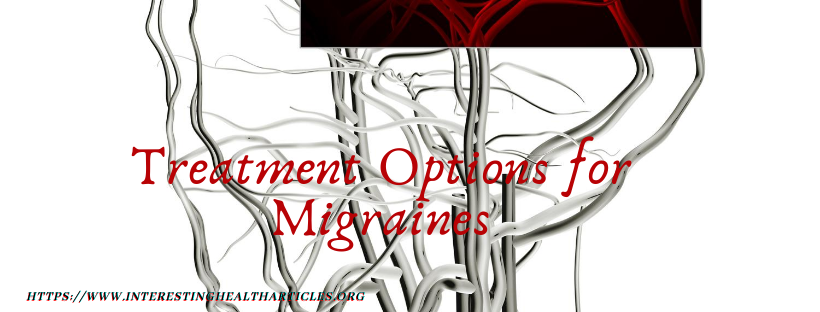Treatment Options for Migraines
Migraines are a severe type of headache that usually affects one side of the head, along with throbbing and pounding. It can also be accompanied with nausea and dizziness. Even though migraines affect men, women, and children, women are three times as likely to get them as men are. If left untreated, a migraine can last up to 72 hours.
Migraines can be treated using two types of treatments, abortive and preventative:
• Abortive treatment is used right as the migraine is starting. They can be taken by nasal spray, skin patch, or self-injection. They’re very effective at stopping the migraine once it starts, and before it reaches its full peak. They also help treat any symptoms related to the migraines, such as nausea and vomiting.
• Preventative treatment is usually used when migraines occur more than once a week, and if the symptoms are too severe. Their aim is to lessen their severity and frequency and can be taken on a daily basis.
Here are some of the ways you can help treat and even prevent migraines before they occur:
Keep a diary. One of the best ways to help alleviate the discomforts of a migraine headache is to keep track of certain details concerning your headaches:
1. Dates and locations will help you narrow down when and where your migraines take place so you can put your finger on a possible pattern
2. Any identifiable triggers
3. Which side of the head the migraine usually affects and any accompanying symptoms
4. How long the migraine lasts
5. All treatments tried and their effects
Preventative Measures
1. Once you’ve identified what triggers your migraines, try to avoid them. In addition, if they can’t be avoided, like hormonal changes in women for example, then try your best to be prepared in order to lessen their effects and your body’s reaction towards them.
2. There are certain medications that can be taken once a migraine hits to help alleviate it so that it never fully starts. High blood pressure drugs, anti-seizure medications, and antidepressants are a few examples. Riboflavin (vitamin B12) is also another way to help stop the onset of migraines before they take hold.
3. Meditation, Acupuncture, and Massage. Practicing meditation on a regular basis can help you regulate stress in your life, which can lessen the occurrence and strength of your migraines. Studies show that acupuncture is helpful for migraine headaches. In addition, massage is a great technique for preventing migraines and reducing their frequency.
4. Supplements and Herbal Remedies. It’s been proven that people with too little magnesium in their bodies suffer from bouts of migraine attacks. Herbs are known for their calming, soothing effects, which can lower levels of cortisol, the “stress” hormone, and play a part in controlling how often you get migraines and how long they last.
5. Regular exercise. Exercising on a regular basis helps control stress, which is the main trigger for migraines. Make sure you don’t overdo it when you exercise which can alternatively bring on an attack – just as long as you do some moderate workouts 2 or 3 times a week.
6. Eat, Drink, and Sleep. When your blood sugar levels drop down, it can trigger a migraine. Dehydration is also another trigger, so make sure you drink plenty of water throughout the day. Sleep is also very important, which is why setting up a consistent sleep routine is crucial, even on weekends and holidays.
The truth is that you don’t have to suffer from migraines, there are plenty of treatment options and preventative measures that may help keep this most horrid type of headache from ruining your life.



